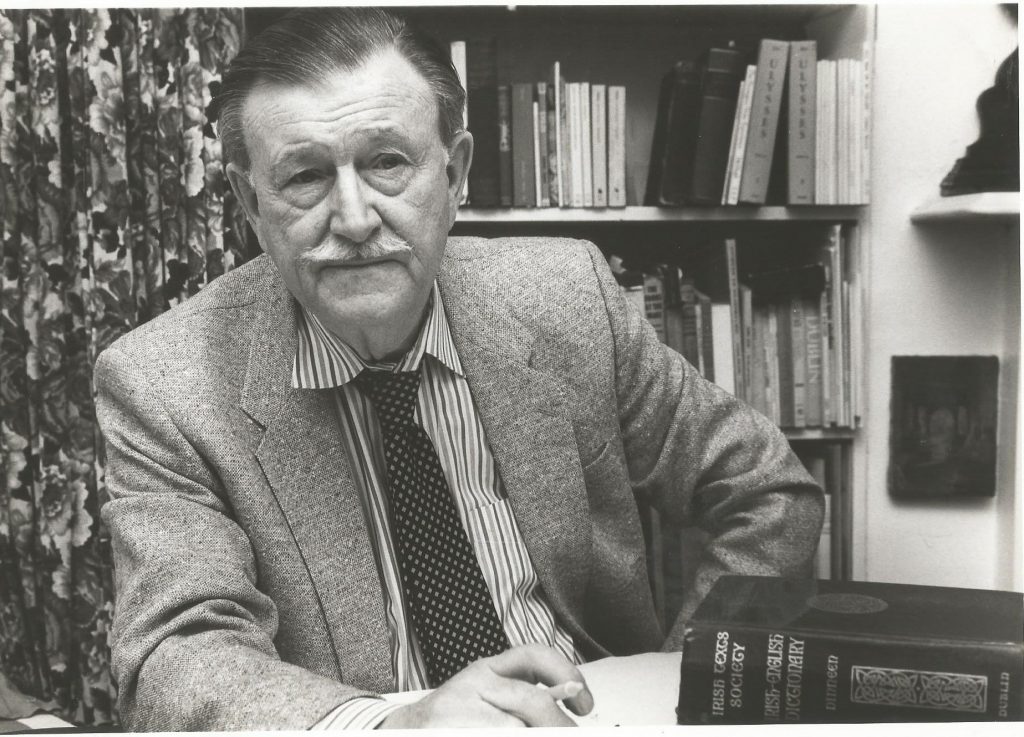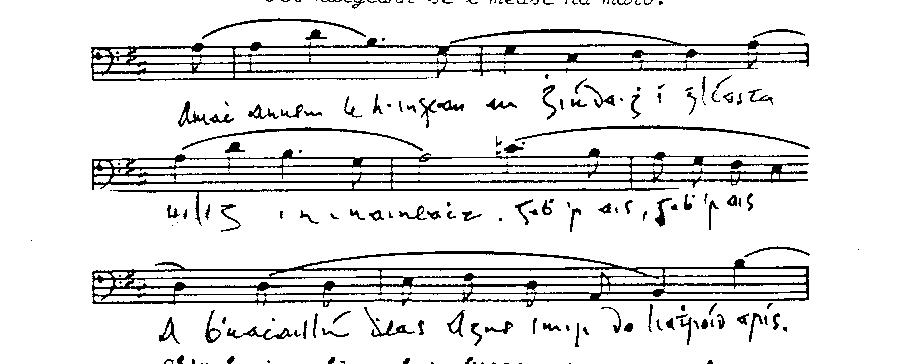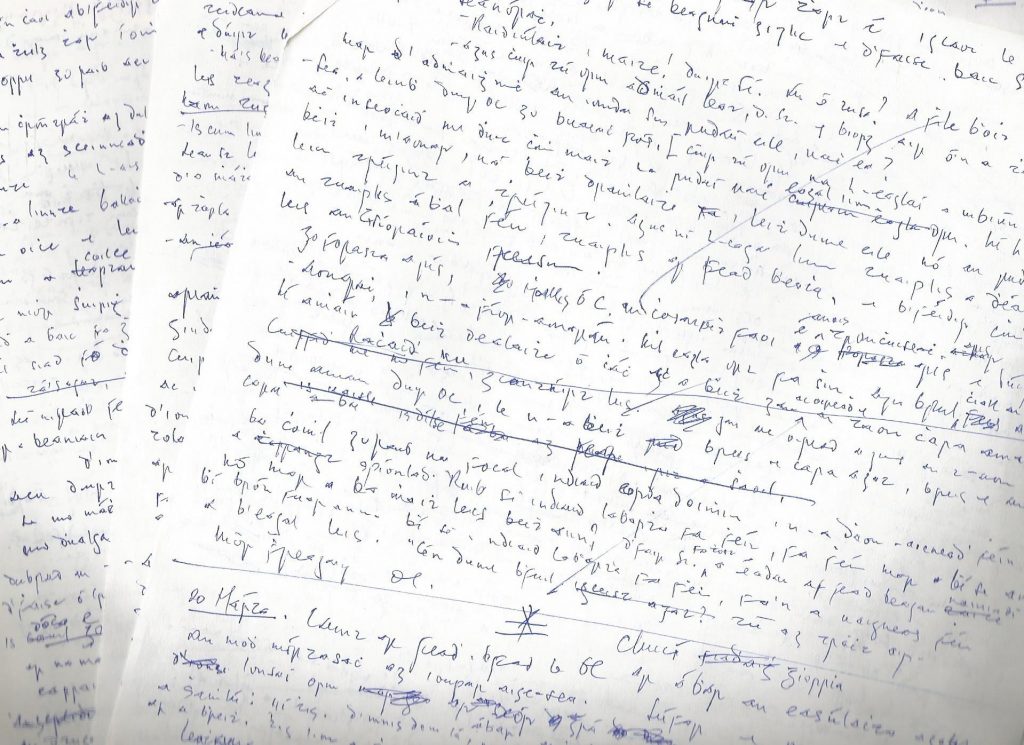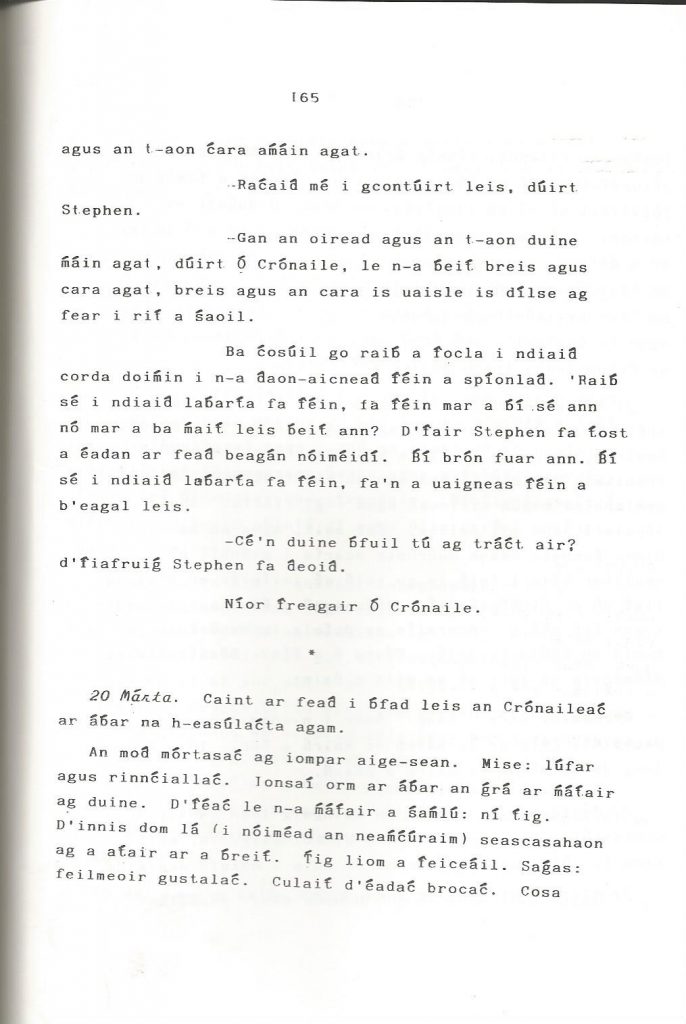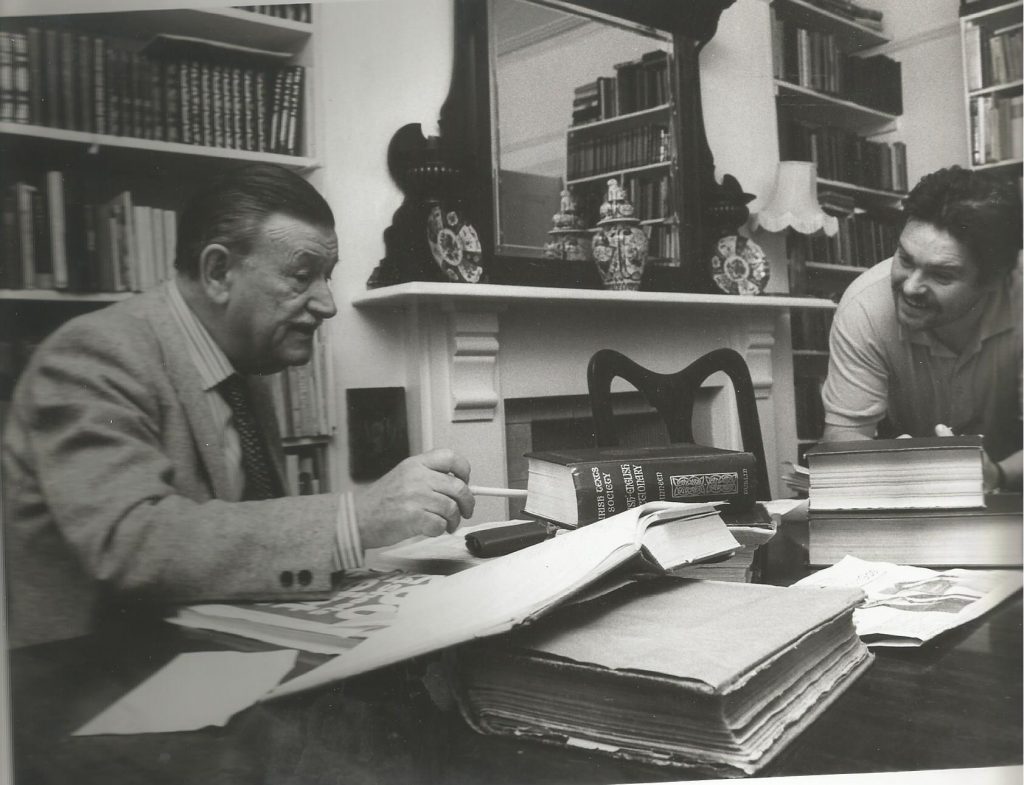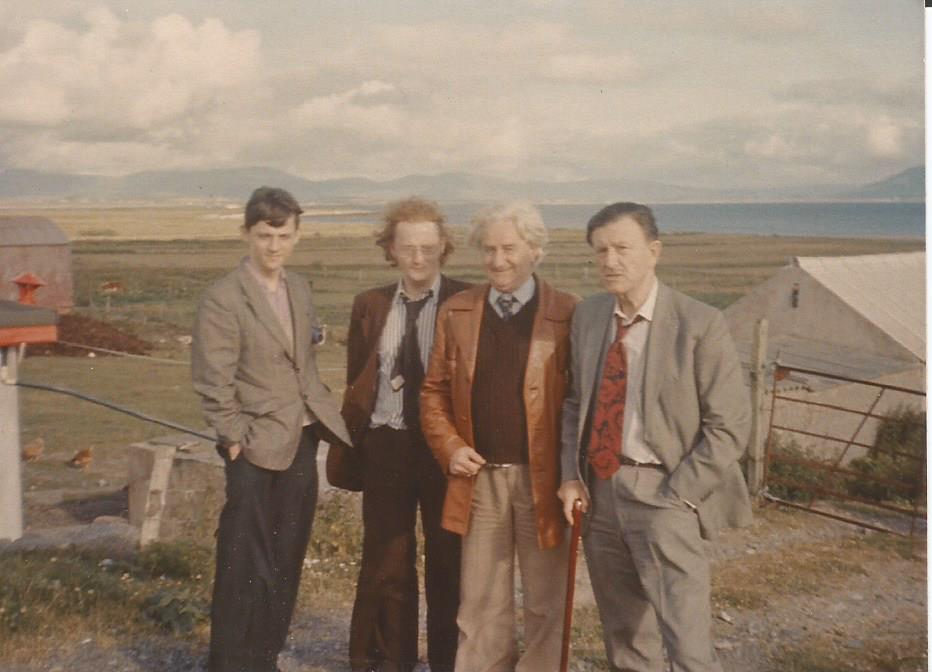Jim Henry - A lifetime's odyssey
The Translation of Ulysses
Jim combined a love for his native language with a fascination with the work of James Joyce to produce Irish translations of Ulysses, A Portrait of the Artist as a Young Man and The Dead.
His early retirement meant he had the time to pursue this interest.
The Translation
Technicalities in Translation
Though Jim was from a Gaeltacht area it was a long time since he had used Irish but his brother-in-law Basil Wilson helped, in fact, Jim said, they never came across a word that Basil didn’t know. (He had compiled notes from his youngest days with a view to making a dictionary but his notes were burnt during a quarrel with his wife. What a dictionary that might have been!)
Jim would work on his own most of the time but when Basil came to visit, the two men would go into the dining room/study and Jim’s wife May used to say that she wasn’t sure what was going on in there but every now and again she could hear great gales of laughter! Jim had quite a mischievous sense of humour and Basil used to suggest the odd Scots Gallic word in place of a more mundane Irish term. Myles Na Gopaleen would no doubt have approved: he threatened he’d translate Ulysses into Irish in the Cruiskeen Lawn, “If they won’t read it in English, I said to myself, bedamn but we’ll put them in the situation that they can boast they won’t read it in Irish either.”
They agreed on certain principles at the start: they’d use old spelling; where possible use Irish current in 1904 and keep proper names in English. Dineen was the final arbiter.
Jim found that anything philosophical or metaphysical was easier than colloquial or slang phrases. A particular difficulty was finding Irish equivalents for non-standard English or bad grammar eg Molly Bloom’s “It must have fell.”
The English texts that Jim used were the three volume The Corrected Text by Gabler and the Bodley Head 1986 publication, (based on Gabler).
The dictionaries they used were: O’Neill Lane’s English-Irish; O’Donovan’s edition of O’Rahilly’s Irish-English; Dineen, Niall O Domhnaill’s recent Irish-English.
For English, they used Chambers 20th Century which, they said they had to consult as often as the Irish.
The family were greatly amused and bemused by discussions about various things eg the famous large dot at the end of episode 17.
Jim usually scribbled out his translation in longhand and then typed it up. Then the printer Noel Murphy printed the booklets. This method continued right to the end for all his Irish work, eg, these lines from “Portrait of the Artist as a Young Man”
The same passage using ‘h’ for aspiration:
“-Gan an oiread agus an t-aon duine mháin agat, duirt Ó Crónaile, le n-a bheith breis agus cara agat, breis agus an cara is uaisle is dílse ag fear i rith a shaoil.
Ba chosúil go raibh a fhocla i ndiaidh corda doimhin i n-a dhaon-aicneadh fhéin a spionladh. ‘Raibh sé i ndiaidh labhartha fa fhéin, fa fhéin mar a bhí sé ann nó mar a ba mhaith leis bheith ann? D’fhair Stephen fa thost a éadan ar feadh beagán nóiméidí. Bhí brón fuar ann. Bhí sé i ndiaidh labhartha fa fhéin, fa’n uaigneas fhéin a b’eagal leis.
-Cé’n duine bhfuil tú ag trácht air? d’fhiafruigh Stephen fa dheoidh.
Níor fhreagair Ó Crónaile.
*
20 Márta. Caint ar feadh i bhfad leis an Crónaileach ar ábhar na h-easúlachta agam.
An modh mórtasach ag iompar aige-sean. Mise: lúfar agus rinnchiallach. Ionsaí orm ar ábhar an ghrá ar mháthair ag duine. D’fhéach le n-a mháthair a shamhlú: ní thig. D’innis dom lá (i nóiméad an neamhchúraim) seascasahaon ag a athair ar a bhreith. Thig liom a fheiceáil.”
Jim also looked at other translations eg, his son Phelim lived and worked in Spain and had good Spanish and brought home the Spanish translation of Ulysses. Some translations were a help but sometimes they got things wrong eg the German version translates Joyce’s word “dun,” meaning a money collector, as “dom,” a preacher.
He discussed things with other Belfast gaeilgores like Gearoid O Caireallain of An tUltach in which the first three chapters appeared in 1984.
Another aspect of Jim’s not having used Irish in a long time was that he remembered, from his childhood, the language of his father and the old men of Doohoma but it seemed to him entirely suitable to place his translation linguistically in the era in which Joyce’s novel is set, namely June 16th 1904.
When Jim visited Mayo, it was natural that he chatted about his translation to Seamus O’Mongáin, a fellow native of Doohoma; Seamus became involved in the work from 1986. Basil died in 1988 but Seamus continued to collaborate. Seamus had great Irish and was particularly useful in his knowledge of medieval Irish, when it came to employing different styles of writing.
Latterly, Basil Henry helped when his father’s eyes were weakening.
When Jim died, Séamus O Mongain, his son and daughter-in-law came to the graveside in Derry and sprinkled over it earth from the family grave in Doohoma.
